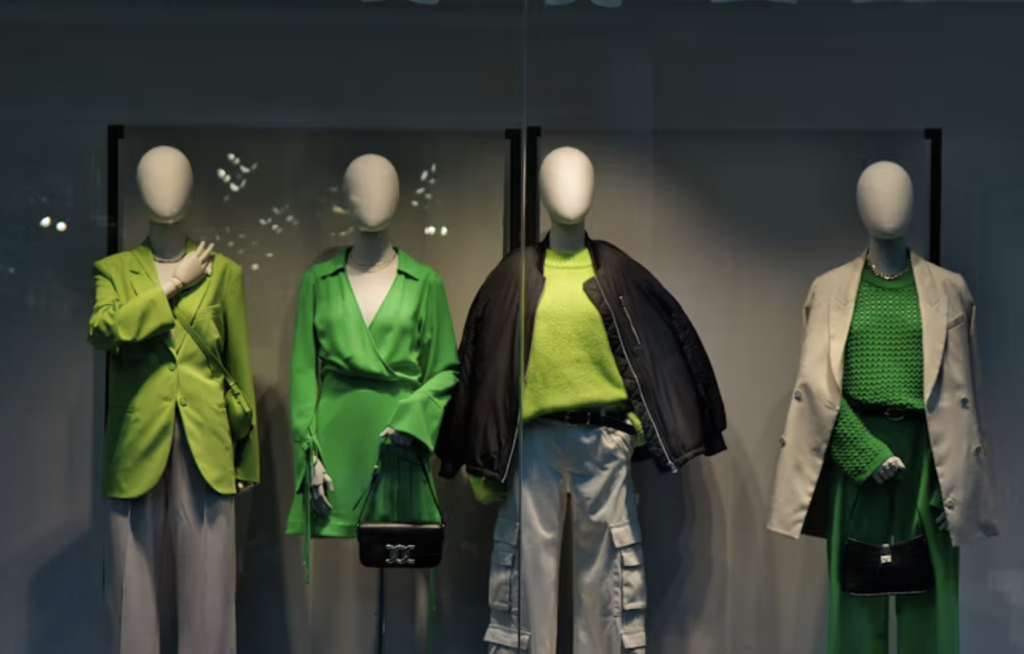
Introduction: The Fashion Industry’s Ocean Waste Crisis
The global fashion industry is notorious for its environmental footprint, contributing significantly to pollution. But a new wave of designers is emerging, using an unexpected source of raw material—ocean waste. The use of ocean plastics and other discarded marine materials to create haute couture garments is not only pushing the boundaries of sustainability but is also changing the narrative around waste. This article delves into the innovators driving this revolution, the processes involved, and the challenges they face.
The Impact of Ocean Pollution on Fashion
The pollution of our oceans has reached alarming levels, with millions of tons of plastic entering the sea every year. These plastics don’t just affect marine life; they also have a far-reaching impact on industries that rely on natural resources, including fashion.
How Ocean Waste Affects Marine Life and Human Health
Ocean plastics break down into microplastics, which are ingested by marine animals. These plastics enter the food chain and, ultimately, can find their way onto our plates. The fashion industry, which often uses synthetic fibers like polyester, contributes to this problem by relying on non-biodegradable materials that take centuries to decompose.
The Need for Sustainable Fashion Practices
The urgency of finding sustainable alternatives is clear. With the fashion industry’s impact on the environment being a critical concern, there is an increasing demand for innovative solutions. One such solution is to recycle ocean waste into high-end fabrics, offering both an environmental and a social benefit.
Pioneering Designers Who Are Leading the Charge
Many renowned fashion designers and brands are stepping up to tackle this issue by incorporating ocean waste into their collections. These pioneers are proving that sustainability and luxury can go hand in hand.
The Role of Fashion Designers in Tackling Ocean Waste
Fashion designers are uniquely positioned to drive change. By using their platforms and creativity, they can bring attention to the issue of ocean pollution while providing consumers with beautiful, sustainable alternatives to traditional fashion.
Case Study 1: Stella McCartney’s Commitment to Sustainability
Stella McCartney has long been a champion of ethical fashion. She has been at the forefront of using sustainable materials, and her collections made from ocean plastics are a testament to her commitment. McCartney collaborates with various organizations to create fabrics from recycled ocean waste, offering elegant designs without compromising on environmental responsibility.
Case Study 2: Prada’s Use of Recycled Materials
Prada has also embraced the ocean waste revolution. In 2019, the brand launched a line of accessories made from recycled nylon sourced from abandoned fishing nets. This initiative, part of Prada’s ongoing sustainability efforts, highlights the potential of ocean waste to create durable and stylish products.
Case Study 3: Marine Serre’s Ocean Waste Couture
Marine Serre’s collections have incorporated upcycled materials and ocean plastics to create garments that challenge the norms of traditional luxury fashion. Her designs include clothing made from recycled ocean waste, proving that high fashion and environmental consciousness can coexist.
Technological Innovations in Recycling Ocean Waste
Turning ocean waste into wearable couture involves significant technological innovation. New recycling methods are allowing designers to create high-quality fabrics from materials that would otherwise pollute the ocean.
Ocean Plastic to Fabric: The Process
The process of transforming ocean plastics into high-quality fabrics is intricate. First, plastic debris is collected from the ocean, cleaned, and processed into yarn. This yarn is then used to create fabrics that are durable and eco-friendly. The final product may resemble conventional synthetic fibers like polyester but is made entirely from recycled materials.
From Collection to Processing: The Journey of Ocean Plastic
The journey from ocean waste to high fashion begins with large-scale cleanup operations. Organizations such as Parley for the Oceans work with manufacturers to gather and sort plastics. After the materials are collected, they undergo a rigorous cleaning process to remove contaminants, followed by shredding and turning them into fibers suitable for textile production.
New Materials and Their Potential
The recycling of ocean waste has led to the creation of new types of fabrics that offer both style and sustainability. Materials like Ocean Knit, made from recycled plastics, are gaining popularity among eco-conscious consumers. These materials are not only reducing ocean pollution but also offering high-performance options for fashion.

Challenges in Converting Ocean Waste into High Fashion
While turning ocean waste into couture is an innovative solution, the process is not without its challenges. From high production costs to consumer education, several hurdles need to be overcome.
Cost of Production and Sustainability Concerns
The process of converting ocean waste into fashion is resource-intensive and costly. The cleaning and processing of materials, coupled with the high-quality standards required for couture, make these garments more expensive than traditional fabrics. However, as demand for sustainable products grows, the industry is seeing improvements in production efficiency.
Consumer Perception and Market Demand
Although sustainable fashion is gaining traction, there is still some skepticism among consumers. The idea of wearing clothes made from ocean waste may seem novel, but the stigma around recycled materials still persists. Overcoming this perception is essential for the widespread acceptance of ocean waste couture.

The Future of Couture and Ocean Waste Recycling
As technology advances and consumer attitudes shift, the potential for ocean waste to become a mainstream material in fashion is high. The future of high fashion lies in the ability to scale up these practices while maintaining sustainability.
Scaling Up: Making Ocean Waste Couture Mainstream
The key to making ocean waste couture mainstream is scalability. By increasing production and refining the recycling process, designers can bring down costs and make these sustainable garments more accessible to a broader market.
How Consumers Can Contribute to the Movement
Consumers also play an essential role in driving change. By supporting brands that prioritize sustainability and making conscious purchasing decisions, they can help make ocean waste couture more widespread and influential.

Conclusion: A Greener Future for Fashion
The innovators turning ocean waste into couture are demonstrating that fashion can be a force for environmental good. While challenges remain, the future of sustainable fashion looks promising. As more designers embrace ocean waste recycling and as consumer demand for eco-friendly products increases, the industry can evolve toward a greener future.
FAQs
1. How is ocean waste turned into fabric?
Ocean waste is collected, cleaned, and processed into yarn, which is then woven into fabric. The process involves various technologies to remove contaminants and create a material suitable for fashion production.
2. Are ocean waste garments as durable as conventional fashion?
Yes, ocean waste garments can be just as durable as traditional fabrics. The recycled materials are carefully processed to ensure high quality and performance.
3. Which fashion brands use ocean waste in their collections?
Brands like Stella McCartney, Prada, and Marine Serre have incorporated ocean waste into their designs, highlighting the potential of recycled materials in high fashion.
4. Why is it important to recycle ocean waste for fashion?
Recycling ocean waste reduces pollution, supports sustainability, and offers a solution to the fashion industry’s dependency on virgin materials, which often harm the environment.
5. Can consumers help in reducing ocean pollution through fashion?
Yes, by supporting sustainable brands and making eco-friendly fashion choices, consumers can contribute to reducing ocean pollution and promoting environmental awareness.







